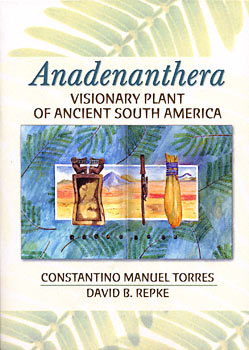
BACK COVER #
As cultures formed and evolved in pre-Columbian South America, Anadenanthera became one of the most widely used shamanic inebrients. Anadenanthera: Visionary Plant of Ancient South America is more than a comprehensive reference on shamanic visionary substances; it is a useful resource for archaeologists and pre-Columbian art historians. This thorough book examines the ritual and cultural use of Anadenanthera from prehistory to the present, along with its botany, chemistry, pharmacology, anthropology, and archeology. Formal and iconographic studies of the artistic expressions in related ritual paraphernalia are presented in detail. The text is richly illustrated and reinforced with an extensive bibliography, clear displays of chemical structures, and detailed tables.BLURBS #
"An encyclopedic gem of a book that draws from the fields of the humanities, the social sciences, and the natural sciences, offering the first comprehensive study on this fascinating shamanic plant. This solid, scholarly work is destined to be a classic and will surely grace the bookshelves of a divers reading audience."-- Stacy Schaefer, PhD, Associate Professor of Anthropology and Co-Director, Museum of Anthropology, California State University, Chico
"With the publication of this book, authors Torres and Repke have set a new standard for investigations into native pharmacology, indigenous mythologies, and ancient art. Chemists, botanists, anthropologists, art historians, and specialists from several other disciplines will find this book well worth adding to their libraries and then carefully reading. It is a model of thorough scientific, investigative research, coupled with lucid descriptive writing."
-- Alana Cordy-Collins, PhD, Professor of Anthropology, University of San Diego
"When the Western world finally found the Andean world, their food-stuff discoveries were readily utilized with potatoes and corn rapidly becoming part of accepted agriculatural science. But the mind-stuff discoveries of the Andean world have had a very different reception, with their mind-altering materials receiving little scientific attention. When this attitude begins to change, this book will be considered a landmark."
-- William J. Conklin, March, Harvard University, Research Associate, Field Museum


